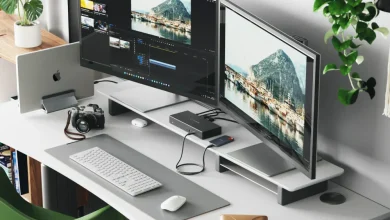3 Ways to Find Balance in a Chaotic World

In many situations, people may feel overwhelmed by how fast things change or how uncertain daily life can seem. A workable path usually involves actions that can be repeated without strict requirements, so effort continues even when plans shift. The aim is to support practical stability through small steps that fit changing schedules, while acknowledging that needs might vary, and adjustments could be required over time.
Adjust routines in small steps
Building a stable rhythm often works better when you adjust routines in small steps, since limited changes are easier to test and keep. At the same time, big overhauls could collapse under inconsistent energy or shifting priorities. You select one basic behavior that does not require special tools or strict timing, such as a short check-in that fits into different parts of the day. Then you keep it steady for several days before adding anything else, which usually prevents early strain. It might be useful to set ranges instead of fixed minute counts, because flexible windows allow completion even when schedules move unexpectedly. People can document start and end times in a simple note, and this record helps create awareness about what is practical in ordinary weeks. You might also define backup versions that count as done when time is short, like a reduced duration that still maintains continuity. Evaluating fit after a few repetitions could show whether the step truly aligns with current demands. If a chosen behavior repeatedly blocks other responsibilities, you could trim it, swap the time, or replace it with a smaller element that holds the purpose while lowering friction. Over time, this method usually yields a modest routine that remains active across busy periods.
Set boundaries for inputs and devices
Managing information flow often reduces overload, because constant notifications, rapid switching, and scattered sources may pull attention away from priorities. You could group checking times into limited windows, mute nonessential alerts, and remove low-value feeds from immediate view, which tends to lower impulsive engagement and preserve focus for tasks that matter. It is reasonable to look at physical surroundings as well, since clutter and noise might push frequent micro-distractions that add up during the day, so placing devices away from reach during specific blocks can help. You might keep a short list of necessary channels for work or personal responsibilities, then route everything else to a later review list that you process once, which usually limits back-and-forth checking. People often assume quick responses are required for every message, yet many items could wait without negative outcomes, depending on context. A short buffer between receiving and responding gives space to decide if action is needed now or after a planned block. After several days of consistent boundaries, attention usually becomes steadier, and simple tasks become more reliable because interruptions no longer force repeated restarts.
Explore holistic approaches to inner growth
Personal growth plans frequently examine factors that affect your thoughts, feelings, and actions. This method may include awareness-raising, everyday routines, and tiny, repeatable behavior adjustments. Stress-related tendencies are generally recognized first. In contrast, others might review values and goals that seem unclear or mixed, and both paths may guide simple next steps that feel workable. You could consider short reflection periods, basic breath awareness, or written check-ins that list triggers and responses, and these activities might be adjusted depending on time and energy. One approach, called psychosynthesis, encourages а sense of integration by helping you recognize and align the different parts of your inner life. It provides a framework for transforming tension or inner conflict into a clearer sense of purpose through guided exercises and steady practice. Group settings might provide structure for accountability, while private sessions or self-led formats can remain flexible when schedules change. It is also common to rotate methods so that motivation stays consistent, and small wins can be recorded to make progress more visible without pressure. Some steps will be active and task-based, while other steps may be passive and observational, and both modes usually contribute to gradual change. This may help build self-understanding that feels practical, and the overall process might shift over time as needs to change.
Conclusion
Keeping steadiness during busy or shifting periods might rely on small routines that continue, limited inputs that protect attention, and brief observation that guides choices. These parts usually interact and reinforce each other as conditions change. You could select one element that seems feasible now, make it consistent, and then add a second element later, which often leads to durable progress while demands remain variable.



